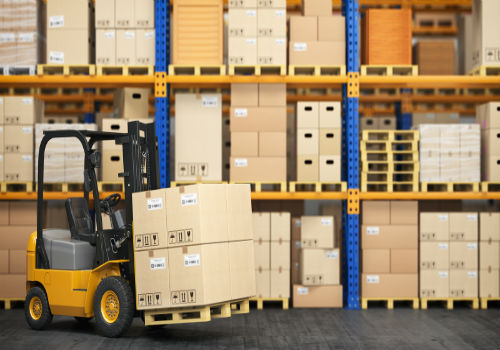While companies have used pallet racking systems for decades, many styles of this racking system exist, so it is essential you use it in the most effective and efficient way possible. Here are seven tips to increase efficiency and create an ideal packing racking system for your warehouse.
One of the main benefits of pallet racking is that it uses less floor space by providing more vertical space to store goods. This allows for more storage by maximizing the vertical space of a warehouse.
Despite vertical storage being a key difference, many styles of pallet racking exist. When deciding which is right for your organization, consider the following things:
1.Safety
With pallet racking systems, there are several safety concerns to take into account. Before you begin planning for your warehouse, talk to your contractor or material handling company and explain to them your pallet racking plan, and they should have helpful advice for you. While you may be eager to plan out your warehouse’s layout, it’s helpful to get knowledgeable advice before investing in a system.
2. Take Advantage of All Open Space
It is important to consider the dimensions of your warehouse before choosing a racking system. In addition to the square footage, consider the vertical space. If planned carefully, vertical space can double or even triple the storage capacity.
Account for all spaces. Some areas of the warehouse may be irregularly shaped, and if so, take careful measurements of each non-conforming area.
One popular arrangement is to place warehouse racks in long rows rather than stacking pallets against the warehouse walls. This kind of warehouse configuration allows for easy navigation and constant access to the product.
3. Determine Your Priorities
The type of pallet racking you use will depend on several criteria such as accessibility, the commodity you are storing, easy installation, and maximum storage capacity.
One option is selective pallet racking, which allows items to be loaded and unloaded from any side of the rack without moving any of the other pallets around. This configuration is usually the most flexible because it allows for maximum storage and accessibility to product.
4. Determine if you will use a FIFO or LIFO Inventory System?
You may need a different system depending on whether your product has a fast turnover rate or needs to be stored for extended periods. Before you choose your racking system, consider your warehouse’s methodology for storage and distribution: Will you use first-in-first-out (FIFO) or last-in-first-out (LIFO)?
- FIFO
If you use first-in-first-out, chances are your business deals with fast-moving or perishable products. With perishables such as food items, you must move the product quickly and efficiently to prevent spoilage.
One of the most popular FIFO-supporting systems is the pallet flow rack. This system has motorized pallets which move the product forward making accessibility much easier.

5. Evaluate Your Overall Storage Needs
Understand your storage requirements. Your warehouse racking system will maximize floor space in your warehouse and should take advantage of all finite space available. If you only need a certain amount of storage, then the rest of the area in the warehouse can serve a different function.
6. Consider Going Mobile
Pallet racking can be made mobile. There are moveable pallet racking systems that can store almost any warehouse item just as any rack would. These mobile racking systems allow for almost double the storage because they have mobile carriages that can put previously unused aisle space to use.
7. Plan for Expansion and Scalability
If you think you might expand your warehouse or want to increase your storage space, plan for your growing business.
Modern pallet racking systems allow you to take advantage of your available space and many racking systems are compatible, allowing for expansion while operating your facility efficiently and safely.







